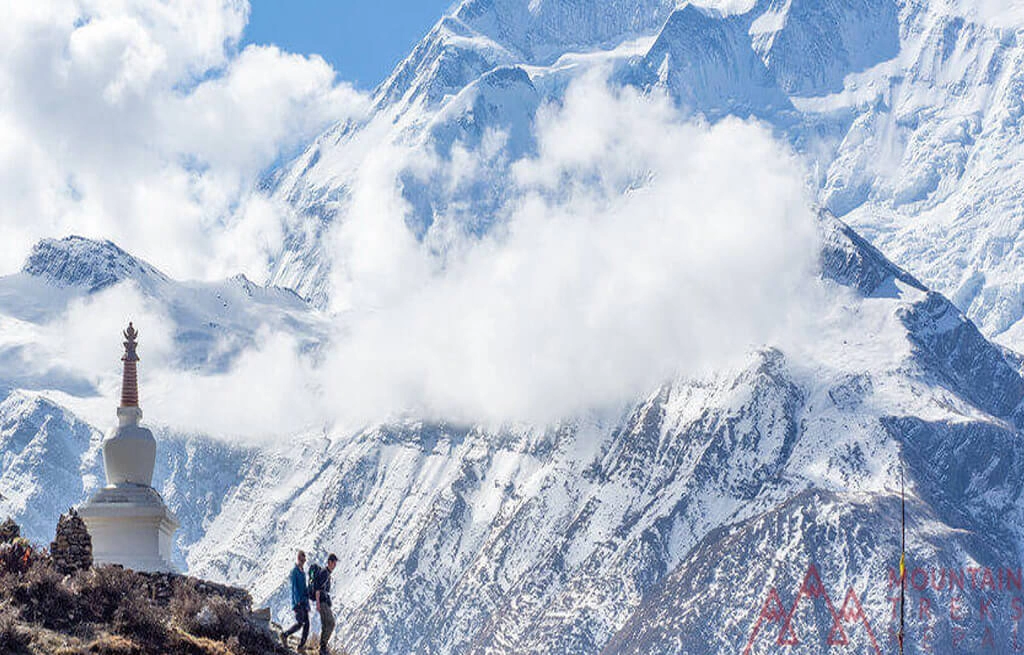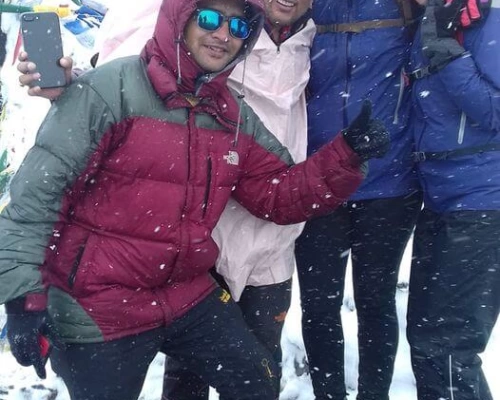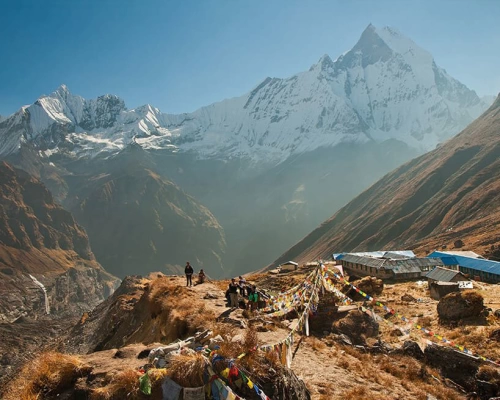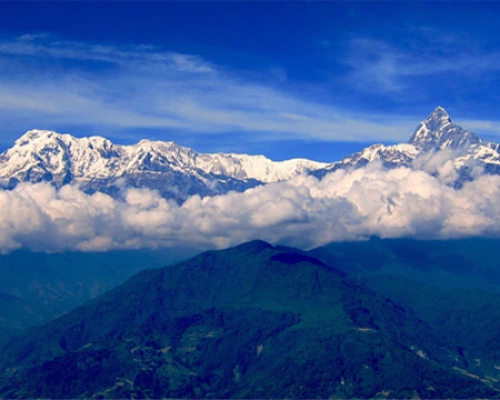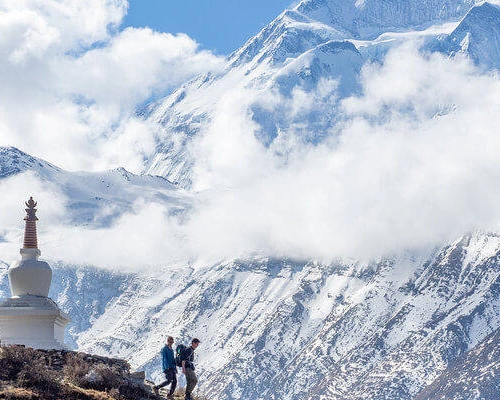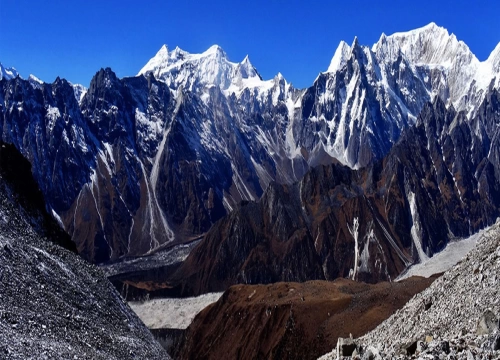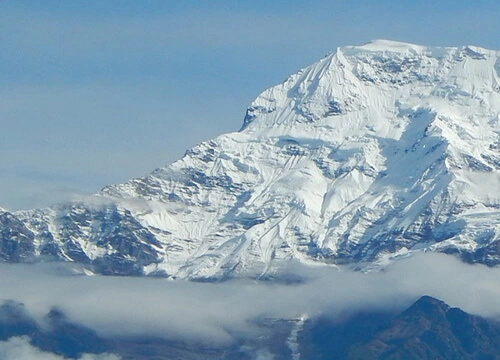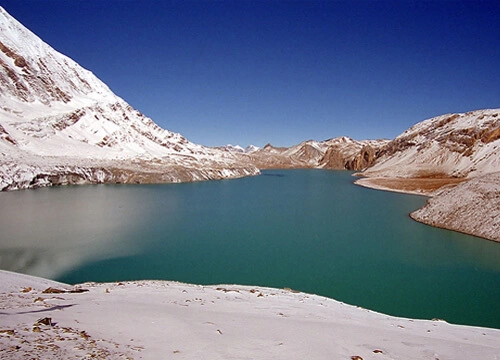Annapurna Panorama trek best time
The best time Annapurna Panorama trek depends on your choice of weather and crowd. The trek can be done year-round, but the weather and conditions can vary significantly depending on the season.
Here is a general overview of the different seasons and what you can expect during each one:
Autumn (late September to November): This is the most popular time to trek to Annapurna Panorama, as the weather is typically clear and dry, and the views of the mountains are stunning. This is also the peak tourist season, so the trails and teahouses may be more crowded.
Spring (March to early May): This is another good time to visit, as the weather is generally clear and dry, and the rhododendrons are in bloom, adding some colorful flowers to the landscape. The crowds are generally smaller than in the autumn.
Monsoon (June to September): The monsoon season brings heavy rainfall to the region, which can make the trails muddy and slippery and make it more difficult to see the views. However, the monsoon season can also bring some beautiful greenery and waterfalls to the region. If you don't mind the rain and are looking for a more quiet and off-peak experience, this could be a good time to visit.
Winter (December to February): The winter can be cold and dry, and the trails may be covered in snow and ice.However, the winter season also offers some beautiful snowy landscapes and fewer crowds.
Annapurna Panorama trek accommodation
Accommodation during the Annapurna Panorama trek is generally in lodges, which offer basic amenities such as food and lodging.The lodges are run by local families and are a great way to experience the culture and hospitality of the Nepalese people.
Most lodges have simple rooms with twin beds and a shared bathroom. Some lodges also offer hot showers for an additional fee.The rooms may be basic, but they are clean and comfortable and provide a warm place to rest after a long day of hiking.
During the Annapurna Panorama trek, it is common to stay in a different teahouse each night. There are also some lodges and hotels available in the larger villages along the route. These options may offer more amenities and comfort, but they may also be more expensive.
Meals
During the Annapurna Panorama trek, meals are generally included in the cost of your trek and are provided at the lodges where you will be staying. The meals are typically simple and hearty, consisting of a variety of Nepalese dishes such as dal bhat (a dish made with rice, lentils, and vegetables), momos (Nepalese dumplings), and tarkari (curried vegetables).
Lodges typically offer both vegetarian and non-vegetarian options, and you can usually choose from a set menu or individual dishes. The food is generally prepared using locally grown ingredients and is typically very flavorful and satisfying.
It is common to eat breakfast, lunch, and dinner at the lodges while on the trek. Breakfast usually consists of a simple meal such as eggs, toast, and tea or coffee. Lunch is usually a more substantial meal, consisting of a main dish such as dal bhat or momos, and some snacks or dessert. Dinner is typically similar to lunch, with a variety of dishes to choose from.
Group/private joining
The Annapurna Panorama trek can be done either as a group trek or a private trek. Here are some things to consider when deciding between a group or private trek:
Group trek: A group trek means that you will be joining a group of other trekkers and will be accompanied by a guide and possibly a porter. Group treks can be a good option for those who are traveling solo and looking for a social experience, or for those who want to save money by sharing the costs of the trek. Group treks may have a set itinerary and may not be as flexible as a private trek.
Private trek: A private trek means that you will be trekking with your own group and will have a private guide and porter. Private treks offer more flexibility and allow you to customize your itinerary to meet your specific needs and interests. Private treks can also be more expensive than group treks, as you will be paying for the guide and porter for just your group.
Child Policy
Your children should be in good physical condition to participate in the Annapurna Panorama trek. The trek involves hiking for several hours each day and climbing to an altitude of over 4,000 meters, so children must be able to handle the physical demands of the trek.
Children's safety is of utmost importance to us at the Annapurna Panorama trek. So we make sure children are accompanied by a responsible adult at all times and that they are properly supervised while on the trek.
We make special arrangements for children, such as providing a separate guide or porter. It is best to discuss your needs and concerns with us.
Travel Insurance
It is a good idea to purchase travel insurance for your Annapurna base camp trekking. Travel insurance can protect in case of unexpected events such as trip cancellations, medical emergencies, lost or stolen luggage, and other unexpected expenses.
It is important to have medical coverage while on the Annapurna Panorama trek, as medical facilities may be limited in the remote areas of the trek. Look for a policy that offers comprehensive medical coverage, including emergency evacuation.
You can additionally combine overage for trip cancellations and interruptions in case you need to cancel or cut short your trip due to unforeseen circumstances. Make sure that your travel insurance policy covers lost or stolen luggage, as this can be a common problem while traveling.
